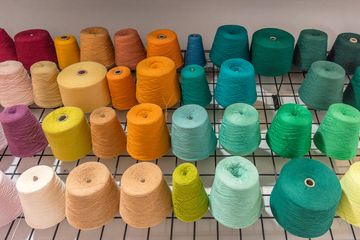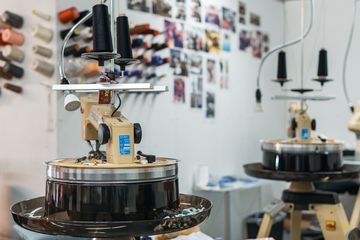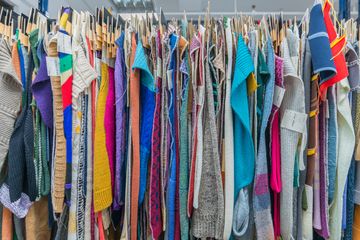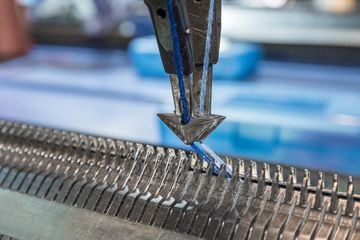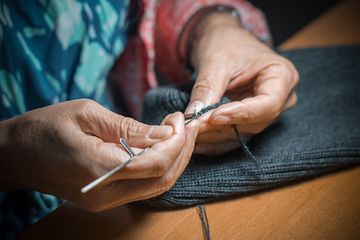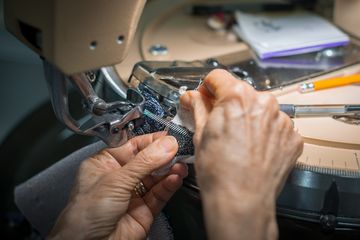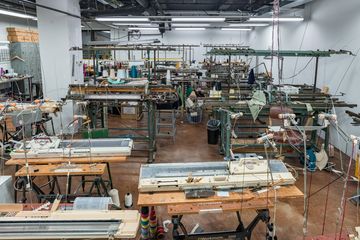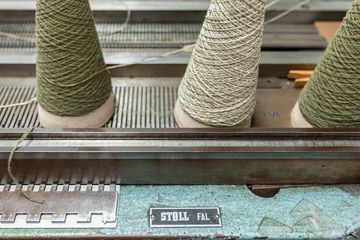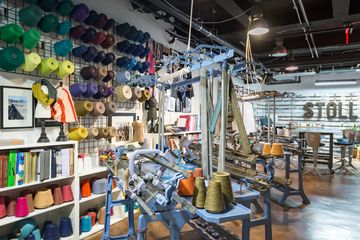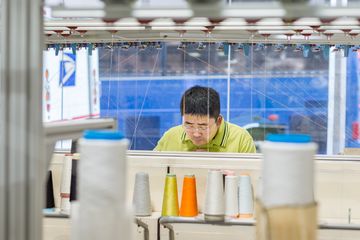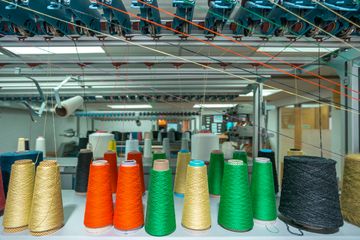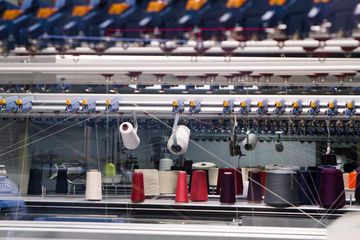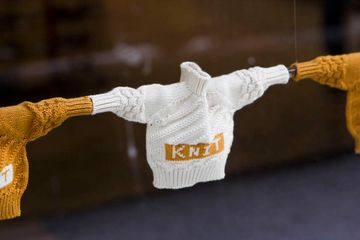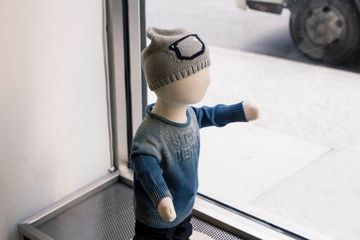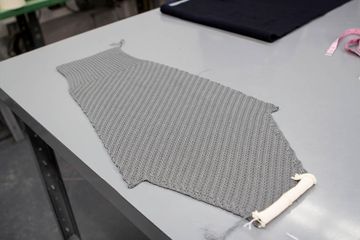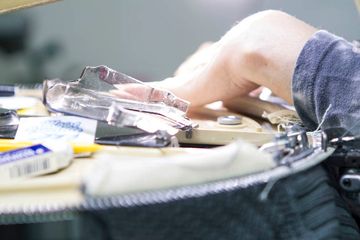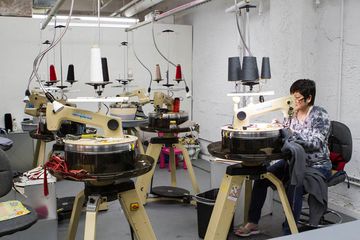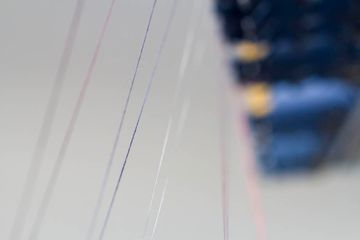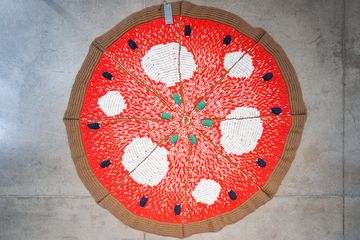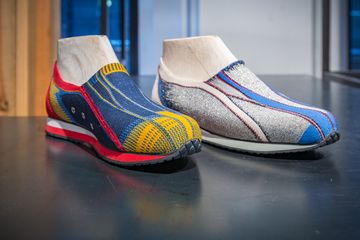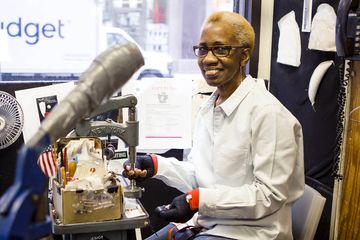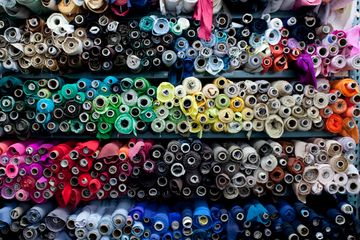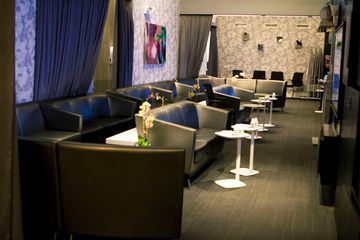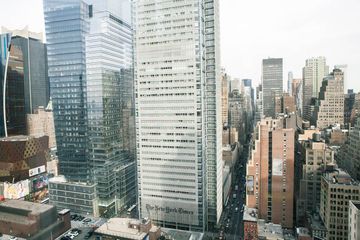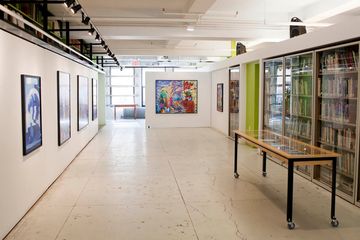
Founded and headquartered in Reutlingen, Germany, Stoll manufactures and sells knitting machines, providing a backbone to which many of our favorite fashions are affixed. Stoll New York, however, is a special Stoll, and does quite a bit more than that. The machines are available for use by designers, who can bring in their clothing ideas and, in concert with the in-house team, fast-track a small number of the garments for fashion shows or as a tester before deciding whether to produce the items in larger quantities. The who's who of fashionistas have come through these doors. Beth, acting as our tour guide, explained: "we work with our team to make their imaginations a reality." The machine room, where this alchemy happens, plays host to an air-puffing, churning scene of machines like old typewriters chugging away at their sartorial duties. These machines, though, can be complex, and take some instruction to use optimally. Thus, there are instructional classes offered on old-school manual Stoll machines from the '50s and '60s, educating designers on the particulars of different stitching techniques. Sammy, one of the male members of the Manhattan Sideways team was lucky enough to chat with a student who had just completed a day of class. She showed off the progress she had made on a scarf design in the span of one day. Sammy commented that it was considerable, and the herringbone pattern was impressive. He was then given the opportunity, himself, to put a couple of stitching lines into a scarf. He declared it "thrilling," but a surprisingly physically demanding experience.
In the technical room in the back, designers link different pieces of garments flawlessly, stitch by stitch. Beth showed us the linking lines on the sweater Sammy was wearing, and it began to hit home how much all of these intricate processes come together to shape the world around us. In a corner, archives of past Stoll-knitted garments exist as a resource for designers to peruse for inspiration, technical insight, and hopefully to encourage designers' artistry as well.
As Sammy said, "it was a lot for a fashion neophyte like myself to wrap my head around," but Stoll exists as quite the singular force in the Garment District: part educational, part manufacturing, part sales-focused, part inspirational, and wholly professional and full of joy. Sammy, upon leaving with a sweater keychain knit by a Stoll machine, announced, "it may immediately be the most well-made garment I have."
